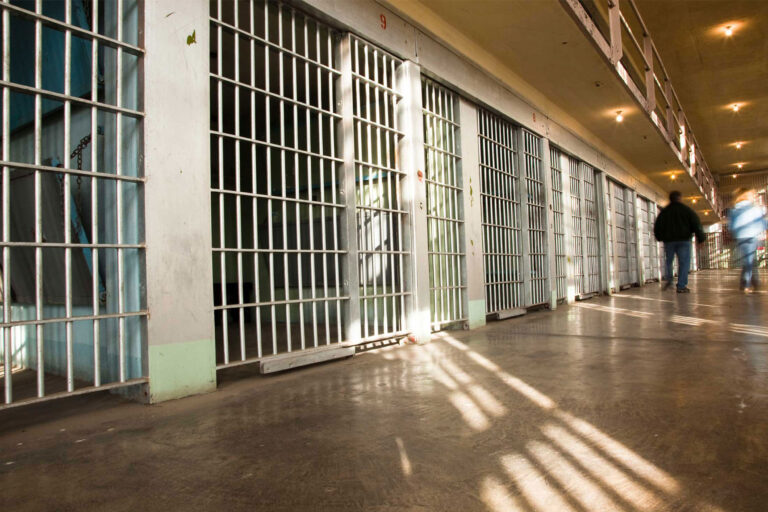The Senate Public Safety Committee considered a bill Tuesday by Senator Jim Nielsen (R-Gerber) that would require counties to collect specific data elements relating to public safety realignment, a policy that shifted responsibility for lower-level felony offenders from the state to counties. The senator said the bill was inspired in part by a data project underway at PPIC. PPIC research fellow Mia Bird testified about the project. Here are her prepared remarks.
Thank you for the opportunity to speak today. My name is Mia Bird, and I am a research fellow at the Public Policy Institute of California. For those who are not familiar with PPIC, we are a non-partisan independent research institute focused on major policy issues in California. PPIC does not take positions on bills and we do not have a position on SB 1097. However, we do have core staff focused on corrections in California and we hope to inform the decisions ahead in this area. At PPIC we are interested in the effects of realignment on recidivism and public safety outcomes, as well as on county jail and corrections systems. Today I plan to discuss our ongoing effort to collect data that would permit the state, counties, and researchers to identify effective county corrections practices.
Public safety realignment (AB 109) fundamentally changed the corrections system in California, shifting responsibility for tens of thousands of lower-level felons from the state to the counties. A central principle of AB 109 is that counties should have a strong hand in designing their own approaches to managing offenders now under their supervision. In authorizing counties to implement their own realignment plans, California has effectively created 58 county policy laboratories and with them, the opportunity to use variation in county approaches to identify best practices that can be shared throughout the state and nationwide. However, if the state is to take advantage of this opportunity, counties will need to collect the minimum data required to evaluate their efforts.
AB 109 states that “fiscal policy and correctional practices should align to promote a justice reinvestment strategy that fits each county.” It defines “justice reinvestment” as a “data-driven approach to reduce corrections spending and reinvest savings” using “evidence-based strategies designed to increase public safety.” It is laudable that the state endorsed the use of a data-driven approach and evidence-based strategies, but many counties will need additional support to meet this goal. While realignment legislation clearly advocated for the use of evidence-based practices, it did not come with resources earmarked for data collection or guidance on the kind of data that would make identifying best practices possible.
PPIC is coordinating with eleven counties and the Board of State and Community Corrections to begin to address this need. Taken together, the eleven counties cover a majority of the state’s realignment population and represent the demographic and geographic diversity of the state. We are working with participating counties to develop the capacity to collect individual-level data on offender characteristics and criminal histories, as well as the corrections interventions these offenders experience at the county level. These interventions may include a wide range of strategies, such as reentry services, graduated sanctioning, and alternatives to incarceration.
Once collected, these county-level data will be merged with state level recidivism data. This data system will allow the state, counties, and researchers to evaluate the effectiveness of the corrections interventions used under realignment. Identifying effective strategies is critical to targeting limited resources to their best use, with the aim of achieving the greatest possible recidivism reduction for the public safety dollar.
PPIC is currently providing technical assistance to set up this data system, and we will work with BSCC to establish procedures for timely access when complete. Resulting datasets will be held and maintained by the BSCC and made available to the state, counties, and qualified researchers for evaluative work and research.
Although the project is in its early stages, we have gained important insights from our work to date. On April 17, PPIC released a report entitled Corrections Realignment and Data Collection in California that offers a vision of what it would mean to fully embrace the data-driven approach to corrections articulated in AB 109. We describe data collection goals that would allow for the identification of evidence-based practices, including the need to collect individual-level data elements, to agree on definitions for those key data elements, and to share limited data across corrections departments and service provider organizations.
In the report, we also examine the barriers counties currently face to achieving these data collection goals. We find a key challenge shared across many counties is the need for upgraded and integrated data systems that can facilitate offender management within agencies, share relevant data across agencies, and collect the data necessary for evaluation. As counties develop plans to improve their data systems, the state has the opportunity to play a role in guiding these efforts. For example, the state might provide guidance on the key system features, coordinate the collection of a minimum set of common elements, and ensure the use of common definitions across counties.
Recently, the state has made investments in new jail construction to increase the physical capacity for community corrections, and we suggest an analogous investment to upgrade the technological capacity for community corrections. How much would such efforts cost? Right now, we do not know the full scope of the funds that would be needed, but our sense from the eleven counties we have worked with is that needs will vary across the state. Because the legislature has charged the Board of State and Community Corrections with providing leadership, coordination, and technical assistance to promote effective and evidence-based corrections practices, the responsibility for overseeing the recommended improvements may fit within the board’s current scope of work.
More than two years into realignment, some data collection efforts have been established and others are emerging, but the work of creating integrated data systems that can be used to demonstrate the most effective corrections strategies remains largely undone. We see this work as the crucial next step in making progress toward reducing recidivism and improving public safety in California.


